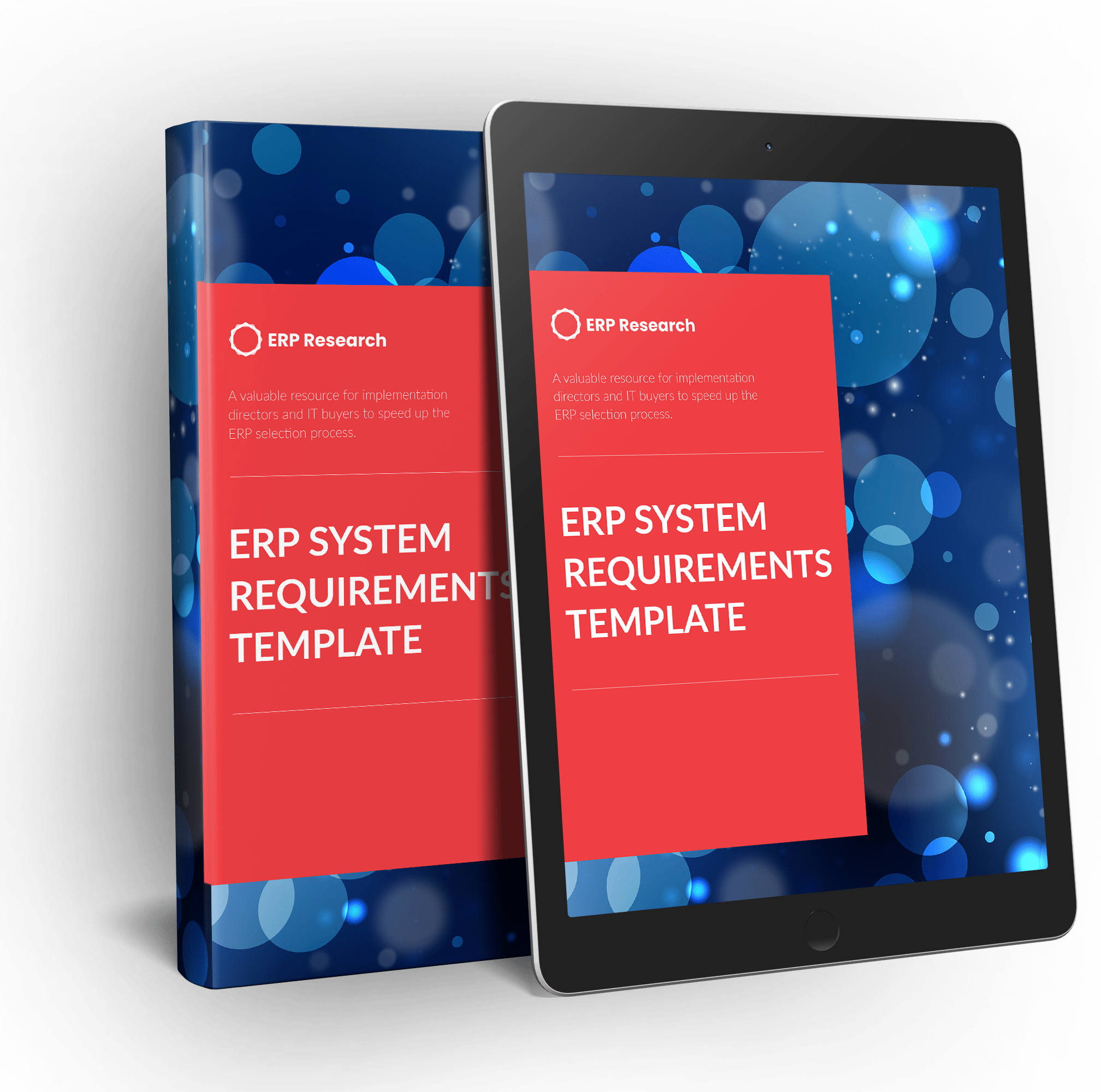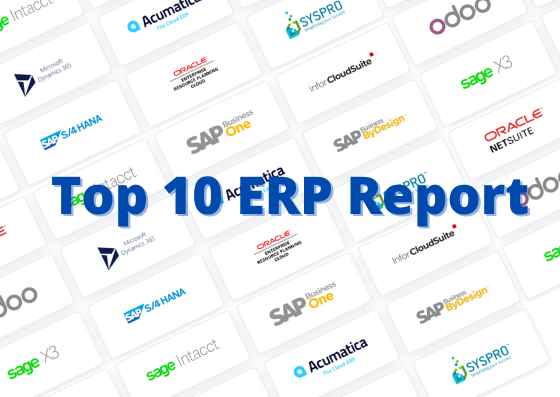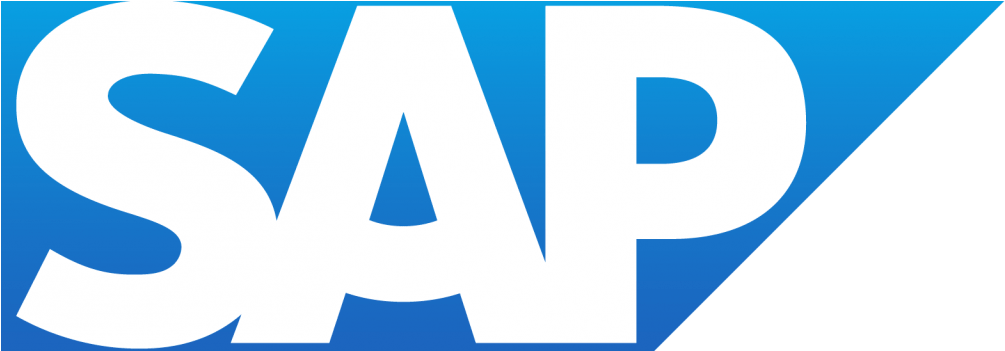
500-10,000+ Employees
$50-10B+ Revenue
✅ Cloud
✅ On-Premise
19,000+
WHAT IS SAP ECC 6.0?
SAP ERP Central Component 6.0 (SAP ECC) is a robust, on-premise enterprise resource planning (ERP) system that can be deployed on-premises, in the cloud, or in a hybrid cloud model.
This solution offers businesses a deep pool of functionality and helps them manage their resources, sales, production, finances, and operations. The software is well suited for medium to large enterprises across various industries, from manufacturing to public sector organizations.
SAP ERP provides a unified, real-time view of your business data, giving you the insights to make better decisions. It also offers built-in analytics and reporting tools so that you can drive continuous improvement in your business.
SAP ECC 6.0 is built on the SAP NetWeaver, an integration and application platform which provides a foundation for all SAP software solutions. SAP NetWeaver includes a wide range of technologies and tools that allow SAP software to run on a variety of hardware and software platforms. Software is even more user-friendly than previous versions of SAP software.
SAP ECC 6.0 provides a comprehensive suite of features and functions for managing financials, logistics, human resources, supply chain management, and customer relationship management.
-
MODULES & FEATURES
-
PROS & CONS
-
INDUSTRY FIT
-
HISTORY
-
DEPLOYMENT
-
FAQ
Modules & Features List
SAP ECC 6.0 is based on the mySAP Business Suite, which is a complete set of business applications from SAP.
The mySAP Business Suite includes more than 25 modules which are distributed in 2 categories/types, Functional Modules and Technical Modules, that can be deployed individually or together, depending on the needs of the business.
Functional SAP ERP Modules:
- Project System (SAP PS)
- Production Planning (SAP PP)
- Quality Management (SAP QM)
- Sales and Distribution (SAP SD)
- Material Management (SAP MM)
- Financial Supply Chain Management (SAP FSCM)
- Financial Accounting and Controlling (SAP FICO)
- Human Resource Management (SAP HRM)
- Human Capital Management (SAP HCM)
- Logistics Execution (SAP LE)
- Business Information Warehousing (SAP BIW)
- Customer Relationship Management (SAP CRM)
- Supplier Relationship Management (SRM)
Technical SAP ERP Modules:
- SAP Basis
- SAP Security
- SAP NetWeaver
- SAP Solution Manager
- Exchange Infrastructure (SAP XI)
- High Performance Analytic Appliance (SAP HANA)
- Information Systems Management (SAP IS)
- Customer Relationship Management (SAP CRM Technical module)
- Advanced Business Application Programming (SAP ABAP)
Let's take a closer look at each of Functional SAP ERP modules and their features in more detail.
1. SAP PS Project System
The SAP PS module enables you to quickly create, manage, and track project assignments. It enables users to collaborate and share resources across teams, manage schedules and all aspects of a project from start to finish.
In project management module that allows you to plan, assign, manage, and monitor your projects. You can quickly access project information from anywhere in the organization. The system's electronic docs and workflows make it easy to generate reports and manage project updates. You can also use the SAP PS to manage and control project costs.
PS offers the following features:
Projects: SAP PS enables you to quickly create, manage, and track project assignments. You can quickly access project information from anywhere in the organization.
Project management: This module allows you to plan, assign, manage, monitor, and conform your projects.
Electronic docs and workflows: SAP PS makes it easy to generate reports and manage project updates.
Project costs: SAP PS enables you to control and manage project costs.
Organizational cubes: SAP PS allows you to view and manage project information within the organization's cubes.
Mailchimp integration: This system offers integration with Mailchimp, an email marketing platform.
2. Production Planning (SAP PP)
Production Planning (SAP PP) is a key SAP ERP Module that helps manage the production process. It involves activities such as planning and forecasting, managing resources, and setting up workflows.
Major activities involved in SAP PP:
Planning and forecasting: The first step in production planning is to plan the production process. This involves determining the sequence in which the resources will be used, as well as the resources that will be needed to produce a particular product.
Allocating/Managing resources: Once the production process has been planned, the next step is to allocate the resources needed to produce the product. This involves deciding which resources will be used in which sequence, as well as determining the number of resources that will be needed to produce the product.
Monitoring and controlling the production process: Once the resources have been allocated and the production process has been started, it is important to monitor and control the process. This involves making sure that the products are produced in a timely and efficient manner, as well as ensuring that the products meet customer expectations.
Adjusting the production process as needed: If the production process is not working as planned, it is necessary to adjust it. This can be done by changing the sequence of resources or the number of resources that are used.
3. SAP Quality Management (SAP QM)
Quality management in SAP systems is essential to ensure that the quality of services and products delivered to customers is consistently high. It covers the entire process from Quality Control, Planning, Assurance, Reporting and identification of quality risks to corrective and preventive actions.
The following are some of the key quality management features in SAP ERP:
Defining quality objectives and constraints: Quality objectives and constraints are established to ensure that the delivered services are meeting customer requirements and comply with applicable regulatory requirements.
Controlled and monitored process flow: Processes and systems are controlled and monitored to ensure that they produce the required quality products and services. This includes quality checks and audits at various points in the process.
Identification of quality risks: Quality risks are identified based on the potential consequences of their occurrence. This allows preventative actions to be taken to mitigate their effects.
Corrective and preventive actions: Corrective and preventive actions are taken to address quality risks and improve the quality of products and services delivered to customers.
4. SAP Material Management (SAP MM)
SAP MM is a powerful SAP ECC 6.0 tool to manage resources, tracking inventory and materials. It is an extremely important aspect of any enterprise, and is essential for ensuring that materials are available when they are needed and that costs are kept to a minimum.
In connection with the various lifecycle phases of the business, accumulating and managing material is of utmost importance. The SAP ECC 6.0 material management solution delivers a comprehensive view of all material in the system and enables organizations to efficiently navigate through material inventory and track material cycles.
The SAP ECC 6.0 material management solution can help organizations achieve the following objectives:
- Limit waste and optimize material usage through comprehensive view of inventory and cycles
- Streamline Procurement and Delivery processes with visibility on material status.
- Optimize material extraction, reduction, and recycling efforts.
Features of the SAP ECC 6.0 material management solution include the following:
- Material Inventory
- Asset Management
- Material Portfolio Management
- Material Cycle Management
- Material Status
- Resource Planning
- Material Extraction, Reduction, and Recycling
- Material Usage Analysis
- Real-Time Decision Making
5. SAP Financial Supply Chain Management (SAP FSCM)
SAP FSCM is a key enabler of SAP ECC 6.0, SAP FSCM helps Organizations manage key aspects of their supply chains, including procurement, inventory management, and shipping, , ensuring that products and services are delivered on time and in budget. With its broad range of capabilities.
Planning tools help you create a roadmap and define your business goals. Execution tools help you track and manage your supply chain activities.
Successful FSCM begins with an accurate and timely forecast of future needs and sufficient resources to meet them.
SAP FSCM Module have a number of features that help you achieve your goals.
Monitor and manage spend: Know precisely where your money is going and make smart choices based on budget implications.
Track customer spending: Monitor your customers’ spending habits and see where they are spending the most.
Track financial options: Get deep insights into your company’s funding options and make the best financial decisions for your business.
Optimize logistics: Get a full picture of your supply chain and optimize your inventory to minimize costs.
Improve cash flow: Create detailed and accurate forecasting of future requirements, and take necessary steps to get funding when you need it.
Stay compliant: Stay compliant with regulatory requirements and stay in front of changing trends.
6. SAP Financial Accounting and Controlling (SAP FICO)
SAP ECC FICO module is another important SAP ERP ECC 6.0 modules offer to enterprises, that is highly scalable, making it easy to manage your organization's financial resources.
The benefits of using SAP ECC FICO include:
- Improved efficiency and accuracy of financial management
- Improved decision-making in financial planning and forecasting
- Increased compliance with international accounting standards
- Improved transparency and understanding of financial statements
Here is the list of some components and their features and benefits:
General ledger: In general ledger accounting, you track the financial transactions of your business. This includes recording the liabilities and assets of your company, as well as the changes in their respective balances. SAP FICO helps you to keep track of your company's finances in a simple and organized manner, making it easier to make informed decisions.
Accounts receivables: Accounts receivables are the money your business has borrowed from suppliers or customers. In order to ensure that you comply with your financial obligations, you need to track the progress of your receivables and ensure that you have sufficient funds to meet your debts. SAP FICO can help you to do this by tracking your receivables and identifying any irregularities or discrepancies.
Accounts payables: Accounts payables are the money your business owes to other companies or individuals. They are usually represented by a debit balance in your company's account books. Once you have received payments from your customers, you need to track this in order to ensure that you have the correct accounts open and that you are not overspending on supplies.
Asset accounting: Asset accounting is a key function in accounting for your business's physical assets. This includes everything from computers and furniture to company vehicles and intellectual property. SAP FICO can help you to track the value and location of your assets, as well as to value and assess any improvements or changes to your assets.
Bank accounting: Bank accounting is used to track the financial transactions of your business with your bank. This includes recording the source of your funds and the transactions that take place between your company and the bank. It is important to keep track of your company's bank accounts in order to ensure that you are complying with all your financial obligations.
Comprehensive Automatic Fraud Detection: SAP ECC 6.0 includes powerful automatic fraud detection capabilities to help you identify and prevent financial fraud. This helps you maintain integrity and guard against financial losses.
7. Human Resource Management (SAP HRM)
SAP ECC Human Resource Management module offers a comprehensive platform for managing people in organizations of all sizes.
SAP HRM module provides complete human resources management capabilities, including recruitment and staffing, workforce planning, organizational management, benefits administration, payroll employee relations, and performance management which will help your organization streamline operations and improve employee satisfaction.
Here are some of the key features of SAP ECC Human Resource Management module:
Planning
SAP ERP ECC 6.0 HRM provides the ability to plan for and forecast future needs for employees, including hiring, training, and staffing. This can help you identify and address potential problems early on, saving your organization time and money in the long run.
Recruitment
SAP ECC 6.0 HRM allows you to manage your recruitment process from start to finish, from finding and vetting candidates to placing them into the right positions. This can help you keep your recruitment costs low and ensures that you’re getting the best candidates for your organization.
Staffing
SAP HRM allows you to easily identify and fill open positions, whether you’re looking for new employees or filling personnel cuts. This can help you keep your organization running smoothly and avoid long-term staffing shortages.
Employee Relations
SAP ECC HRM helps you to manage your workforce effectively, from managing employee complaints and confrontations to setting employee performance goals. This can help you build a productive and positive environment for your employees.
Performance Management
SAP HRM offers features like performance appraisals and rewards programs to help you manage employee performance. This can help you provide employees with accurate and timely feedback, helping them improve their skills and productivity.
8. CRM Customer Relationship Management (SAP CRM)
SAP ECC CRM (Customer Relationship Management) is a module of SAP that helps businesses manage customer interactions and data. It enables organizations to track and respond to customer needs and preferences in a timely manner.
The main features of SAP CRM include the following:
Lead Management:
The lead management functionality of SAP CRM allows businesses to track and manage leads throughout the sales cycle. It helps sales teams identify and prioritize leads, and track their activities and progress.
Contact Management:
The contact management functionality of SAP CRM enables businesses to manage their customer contact information in a central repository. It helps organizations keep track of customer interactions, and respond to customer inquiries in a timely manner.
Customer Data Management:
SAP CRM provides a central repository for all customer data. This includes contact information, demographic data, and purchase history. SAP CRM also provides tools for managing customer data quality.
Opportunity Management:
The opportunity management functionality of SAP CRM allows businesses to track and manage sales opportunities throughout the sales cycle. It helps sales teams identify and prioritize opportunities, and track their progress.
Case Management:
The case management functionality of SAP CRM enables businesses to track and manage customer service cases. It helps customer service teams resolve customer issues in a timely and efficient manner.
Product Catalog:
The product catalog functionality of SAP CRM enables businesses to manage their product information in a central repository. It helps organizations keep track of product details, and price changes.
Price List:
The price list functionality of SAP CRM enables businesses to manage their pricing information in a central repository. It helps organizations keep track of pricing changes, and discounts.
Workflow:
The workflow functionality of SAP CRM enables businesses to automate their business processes. It helps organizations to streamline their business operations, and improve efficiency.
Automated Customer Service and Support:
SAP ERP ECC CRM includes a number of features for automating customer service and support processes. This includes a knowledge base, case management, and web self-service.
Analytics and Reporting:
SAP ECC CRM provides a number of tools for analyzing customer data and generating reports. This includes predictive analytics, customer segmentation, and reporting.
9. Human Capital Management (SAP HCM)
SAP ERP HCM is a power tool which helps businesses manage their human capital. It offers a suite of tools for tracking employee information, managing payroll and benefits, and managing talent and performance.
SAP HCM is a powerful tool that can help companies streamline their HR processes and improve their overall efficiency. Here are some of the key features of SAP HCM:
Payroll and benefits administration: SAP HCM can help companies automate their payroll and benefits processes. This can save a lot of time and money, and help ensure that employees are paid correctly and on time.
Performance management: SAP HCM includes a powerful performance management system. This can help companies track employee performance and identify areas where improvement is needed.
Recruiting: SAP HCM can help companies streamline their recruiting process. It includes features such as job posting and applicant tracking.
Employee self-service: SAP HCM includes a self-service portal that allows employees to view and update their personal information, access their payroll information, and more.
SAP ECC 6.0 HCM is definitely worth considering if you are searching for a comprehensive human capital management solution.
10. Logistics Execution (SAP LE)
SAP Logistics Execution (SAP LE) module is a part of the SAP ECC ERP system that covers all aspects of logistics execution. It provides a complete picture of the supply chain, from goods receipt to shipment, and enables businesses to plan and execute their logistics activities in a more efficient and effective way including
- Centralized management of logistics execution
- Real-time visibility into all aspects of logistics operations
- Improved coordination between different parts of the supply chain
- Automated execution of logistics processes
- Reduced costs and improved efficiency
SAP LE is an integrated module that helps businesses to effectively manage their logistics processes. The module provides a central platform for managing all activities involved in logistics execution, from transportation and warehousing to order management and track & trace.
Some of the key features of SAP LE include:
Transportation management: SAP LE helps businesses to plan and execute their transportation activities in a more efficient way. It provides a complete view of the transportation network and helps businesses to optimize their routes and resources.
Warehouse management: SAP LE provides a complete picture of the warehouse, from incoming goods to outgoing shipments. It helps businesses to optimize their warehouse operations and to reduce their inventory levels.
Order management: SAP LE helps businesses to manage their orders in a more efficient way. It provides a complete view of the order process, from creation to delivery, and helps businesses to track and trace their orders.
Track and trace: SAP LE provides a complete picture of the supply chain, from goods receipt to shipment. It helps businesses to track and trace their shipments and to monitor the status of their orders.
Pros & Cons
Pros:
- Flexibility: One of the main advantages of SAP ECC 6.0 is its flexibility. It is designed to be scalable and adaptable to the changing needs of businesses, meaning that it can grow with your business.
- Functionality: SAP ECC 6.0 is packed with features and functionalities that can help businesses to streamline their operations. From financial and accounting to supply chain management and human resources, SAP ECC 6.0 has it all.
- integrations: SAP ECC 6.0 also offers a wide range of integrations with other software, making it easy to connect all your business systems together. This can save you time and money in the long run.
- Customer support: As one of the leading enterprise resource planning software suites, SAP ECC 6.0 comes with excellent customer support. If you ever have any problems or questions, you can be sure that SAP’s team will be there to help you.
Cons:
-
Complexity: One of the main disadvantages of SAP ECC 6.0 is its complexity. It is a large and complex software suite that can be difficult to learn and use. This can be a major barrier for businesses that do not have the resources to invest in training their staff.
-
Cost: Another downside of SAP ECC 6.0 is its cost. It is one of the most expensive ERP software suites in the market, which can make it out of reach for small businesses and startups.
-
Implementation: SAP ECC 6.0 can also be difficult to implement, means that it can take a long time and a lot of effort to get it up and running properly. This can be a major headache for businesses that are already under pressure.
-
EOL Statement: SAP plans on terminating its maintenance support for SAP ECC in 2027, which will require customers to transition to S/4HANA by 2027.
Industry Fit
SAP provides following industry specific solution:
- Aerospace
- Automotive
- Banking
- Finance
- Healthcare
- Education
- Insurance
- Media
- Mining
- Life science
- Oil, Gas, and Energy
- Postal Services
- Consumer Products
- Pharmaceuticals
- Passenger Travel and Leisure
- Service Provider
- Defense & Security
- Telecommunications
- Higher Education & Research
- Industrial Machinery & Components
- Cargo Transportation and Logistics
- Federal, National, and Central Government
- Regional, State, and Local Government
- Wholesale Distribution
94% of the world’s 500 largest companies run SAP ERP solutions including ExxonMobil, Novartis, Hewlett-Packard (HP), Honeywell Audi AG, IKEA and Apple (Apple use SAP Solutions for App Store, iTunes, online store and services as well as to manage its finance and human resource departments). On the other hand, approximately 80% of small and medium enterprises (SME) are using SAP ERP Solutions.
According to the SAP corporate fact sheet:
- 1 ERP software company in Dow Jones Sustainability Index for 14 years
- 87% of total global commerce ($46 trillion) generated by SAP customers
- 92% of the Forbes Global 2000 companies use SAP
- 98% of the 100 most valued brands use SAP
- 77% of the world’s transaction revenue touches an SAP system
- 100% of the greenest beverage producers in the world use SAP
- 100% of the Dow Jones top scoring sustainability companies use SAP
- 100% of the greenest pharmaceutical companies in the world run SAP
- 100% of the greenest automobile companies in the world run SAP solutions
History
The history of SAP ERP Central Component 6.0 (SAP ECC 6.0) which was released in Oct 2005. SAP ECC 6.0 is the technical successor of SAP R/3, In other words it’s a complete overhaul of the SAP R/3, which includes many new features and functions. One of the most notable new features is the integration of the business intelligence platform, SAP Business Information Warehouse, into the core software. This integration gives users the ability to make better informed decisions by providing them with real-time data and analysis.
The sequence is:
SAP R/3 4.6C
SAP R/3 Ent 4.7
SAP ECC 5.0
SAP ECC 6.0
Early days
The first release of SAP ERP Central Component was a major release that delivered a new product architecture and a new user interface. The release also included many new features and enhancements, such as the introduction of mySAP Business Suite, a new component-based development environment, and enhanced integration with the SAP NetWeaver technology platform.
SAP ECC 6.0 was a significant release for the SAP software portfolio and laid the foundation for future SAP software solutions.
Since its release, SAP ECC 6.0 has been continuously enhanced, with new features and functionality being added in each release.
In 2012, SAP released SAP ERP Central Component 6.0 Enhancement Package 6 (SAP ECC 6.0 EHP6), which included a number of significant enhancements, such as support for the latest versions of SAP software, and improved performance and stability.
The mySAP Business Suite
The mySAP Business Suite was a key component of the SAP ECC 6.0 release. The mySAP Business Suite was a complete, integrated set of business applications that ran on the SAP NetWeaver technology platform.
The mySAP Business Suite included mySAP ERP, mySAP CRM, mySAP PLM, mySAP SCM, mySAP SRM, and mySAP Business Intelligence. The mySAP Business Suite was designed to help businesses run their core operations, including financials, human resources, and operations.
SAP ECC 6.0 enhanced integration
SAP ECC 6.0 delivered enhanced integration with the SAP NetWeaver technology platform. The enhanced integration made it possible for businesses to extend their SAP solutions to mobile devices and to connect to external systems and databases.
The enhanced integration also made it possible for businesses to deploy SAP solutions in the cloud.
The SAP NetWeaver technology platform
The SAP NetWeaver technology platform was a key component of the SAP ECC 6.0 release. The SAP NetWeaver technology platform was a complete, open, and integrated platform that included a wide range of technologies, such as the SAP ABAP programming language, the SAP Java development environment, and the SAP HANA database.
The SAP NetWeaver technology platform was designed to help businesses develop, deploy, and run SAP solutions.
The component-based development environment
SAP ECC 6.0 included a new component-based development environment. The component-based development environment was designed to help businesses develop, deploy, and run SAP solutions.
The component-based development environment included the SAP Web Application Server, the SAP Business Objects technology, and the SAP HANA database.
The SAP Web Application Server
The SAP Web Application Server was a key component of the SAP ECC 6.0 release. The SAP Web Application Server was a complete, open, and integrated web application server that ran on the SAP NetWeaver technology platform.
The SAP Web Application Server included the Apache Tomcat web server, the SAP Web Dispatcher, the SAP Internet Transaction Server, and the SAP Portal.
The SAP Business Objects technology
The SAP Business Objects technology was a key component of the SAP ECC 6.0 release. The SAP Business Objects technology was a complete, integrated set of business intelligence tools that ran on the SAP NetWeaver technology platform.
The SAP Business Objects technology included the SAP Business Objects Enterprise, the SAP Business Objects Edge, and the SAP Business Objects Mobile.
The SAP HANA database
The SAP HANA database was a key component of the SAP ECC 6.0 release. The SAP HANA database was a high-performance, in-memory database that ran on the SAP NetWeaver technology platform.
The SAP HANA database was designed to help businesses do more with their data.
The cloud
SAP ECC 6.0 made it possible for businesses to deploy SAP solutions in the cloud. The cloud was a new way to deploy and run SAP solutions.
The cloud made it possible for businesses to deploy SAP solutions on demand, without the need to install and maintain the SAP software.
The cloud made it possible for businesses to pay for only the resources they needed, when they needed them.
The release also laid the foundation for future SAP software solutions.
Deployment Options
SAP ECC 6.0 is natively an On-Premise ERP system but is now available in a Private Cloud hosted environment through SAP's RISE, private Cloud model.
Frequently Asked Questions (FAQ)
Is Microsoft Dynamics GP being discontinued?
No. Contrary to widely available information on the internet, Microsoft is not planning on shutting down GP at all. The false information pinpoints 2028 (some sources say 2025) as an end date for the official support for Microsoft Dynamics GP. This is due to a misunderstanding or misrepresentation.
Microsoft only announced that the older versions of GP will not be supported beyond a certain point in their lifecycle. For example, the support for Dynamics GP 2016 has a Mainstream End Date of Jul 13, 2021, and an Extended End Date of Jul 14, 2026.
There is no intention of shutting down development for the different versions of Microsoft Dynamics, including GP, SL, C5, or 365 Business Central. All of these cater to different audiences and cover different business needs.
However, no one can predict what will happen in 5 years in Software Development. It is safe to assume though, that regularly updated business software will be supported by Microsoft indefinitely.
Is Microsoft Dynamics GP cloud-based?
Microsoft Dynamics GP is not cloud-based, although the latest versions enable cloud usage through hosting in the Microsoft Azure Cloud. It does require some workarounds and extra tasks to operate GP in the cloud.
What are the System Requirements for Microsoft Dynamics GP?
The System Requirements vary from version to version. The latest version has the following requirements:
OS: Windows 11
Processor: 2.6 GHz
RAM: 2 Gb
Refer this table for more detailed information.
How much does Microsoft Dynamics GP cost?
The typical retail price of the Starter Pack is $5,000, for 3 concurrent users. Additional users cost $3,000 each, read-only users cost $600 each, and self-serve users (limited personal information access and purchase requests for employees) are around $60- $150 each.
The Extended Pack costs $10,000
Customization Pack: $6,000
Extended Human Resources & Payroll Pack: $7,000
Consult the Modules section for an overview of what each Pack contains.
What does Microsoft Dynamics GP stand for?
GP stands for Great Plains. GP is based on an accounting software called Great Plains that existed for a very long time, and got acquired by Microsoft, similar to SL and C5, which are other members of the Dynamics software family.
Who are the Microsoft Dynamics GP competitors?
We commonly see customers evaluating other Cloud ERP solutions such as Microsoft Dynamics 365 Business Central, Oracle Cloud ERP, Sage Intacct, Acumatica, SAP Business One, or QuickBooks Desktop Enterprise, alongside Microsoft Dynamics GP.
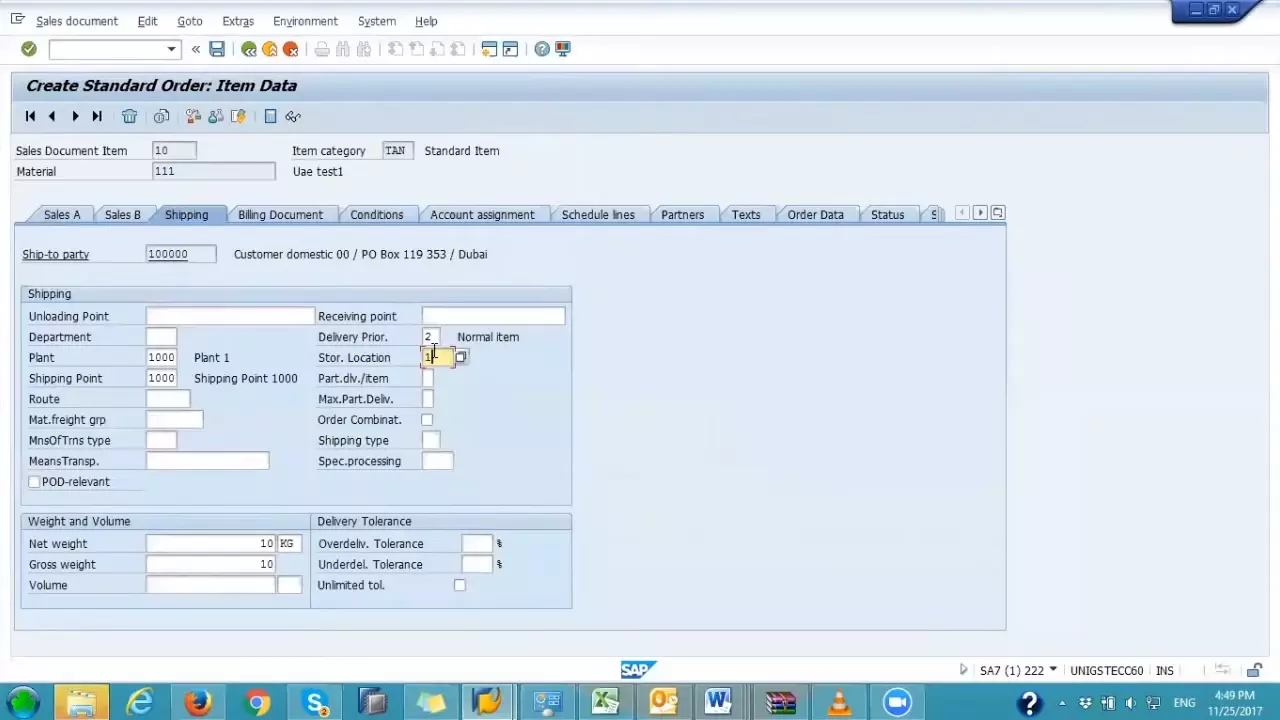
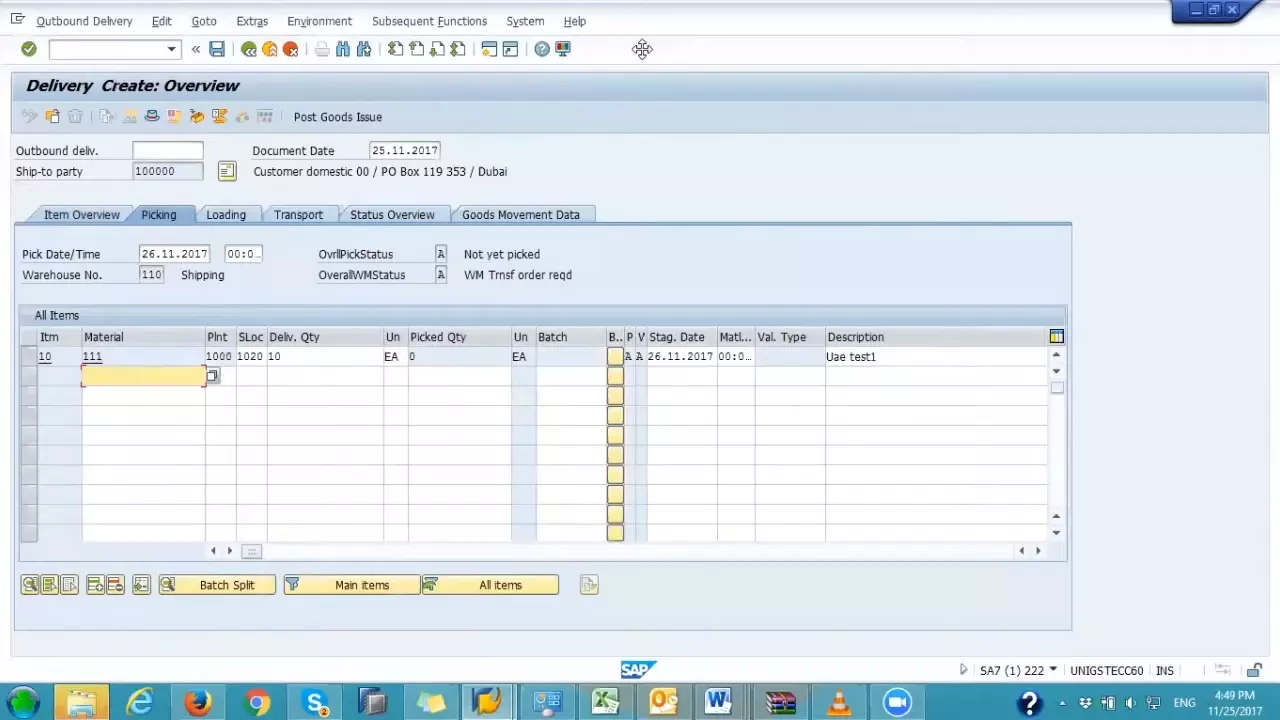
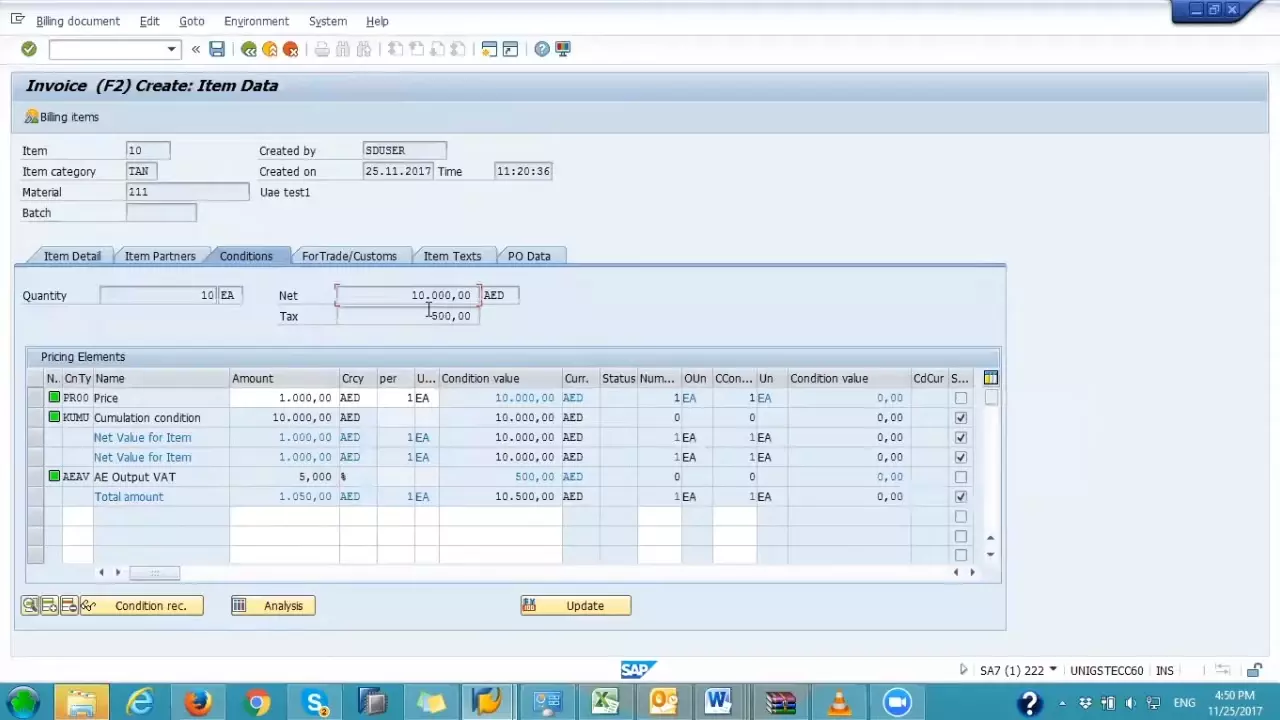




Download our Top 10 ERP Report Now
SAP ERP Pricing
Get a SAP ECC 6 quote today.
SAP ERP Demo
Get a SAP ECC 6.0 or R/3 demo, personalized to your requirements.




